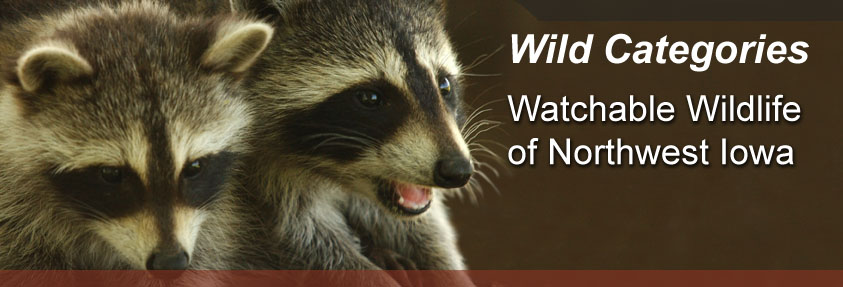| Wild Category - Glacial Trail Loop
Some of the finest landforms of glacial origin can be found in Northwest Iowa. Lessons from the land can be found in the natural pothole lakes, boggy fens, irregular shaped hills and grand boulders hidden beneath the surface of the soil. This area was influenced by the "Des Moines Lobe" of the last glacial advance into the state. Check out some of the remnant remains of this massive ice movement.
Want to dig into this history mystery to learn more? Here's a look at some of the icy terms:
- Catsteps - These ridges, made of windblown loess soil, form "steps" on the slopes of untilled hillsides.
- Continental Glaciers - Sheets of ice spread across large areas – even entire continents. These glaciers currently cover Greenland and Antarctica; but, in the past, they spread across vast portions of North America and Europe.
- Drumlin - An oval or elongated hill is formed by the movement of glacial ice sheets across rock debris. Although drumlins come in a variety of shapes, the glacial side is always high and steep while the lee side is smooth and tapers gently in the direction of ice movement.
- Glacial Till - Rock debris that was deposited by glacial ice.
- Hanging Valley - Ice melting from a tributary glacier cuts a depression deeper that the surrounding channel. Evidence of the previous waterway remains "hanging" on a hillside above the waterway.
- Hogsback - This type of linear ridge is composed of steeply tilted hard and soft rocks. The ridge protrudes out from the surrounding area. The softer rock erodes more quickly with the hard rock capping the top due to the differing weathering rates. The defining characteristic is a slope greater than 30-40 degrees. The ridge gets its name from resembling the ridge between the shoulder blades of a hog.
- Kame - When melting water plunged into a crevasse near the edge of a retreating glacier, a low, but steep sided hill composed of poorly sorted sands and gravels was formed beneath the ice. As the glacier receded from the area the steep hill remained.
- Kettlehole - This bowl shaped depression is formed when a large block of ice is buried in an outwash. When the ice melts, the sediment drops into the hole becoming a depression.
- Lateral Moraine - Unsorted till was deposited along the sides of an ice stream where the ice met the rock wall. The moraine is the long hill formed along this stream.
- Loess - This is a very fine windblown sediment the size of fine silt. Huge hills were formed of this soil along the western edge of Iowa and also in China.
- Terminal Moraine - This hill, like the lateral moraine is unsorted till. The terminal moraine is till deposited along the ends of an abating glacier.
|
|
|

